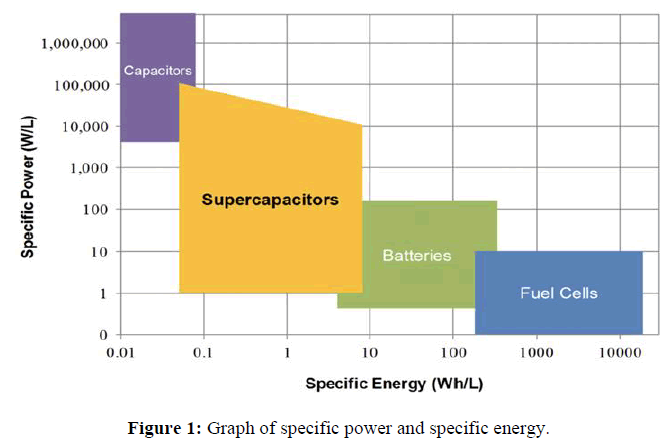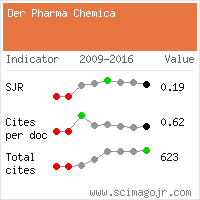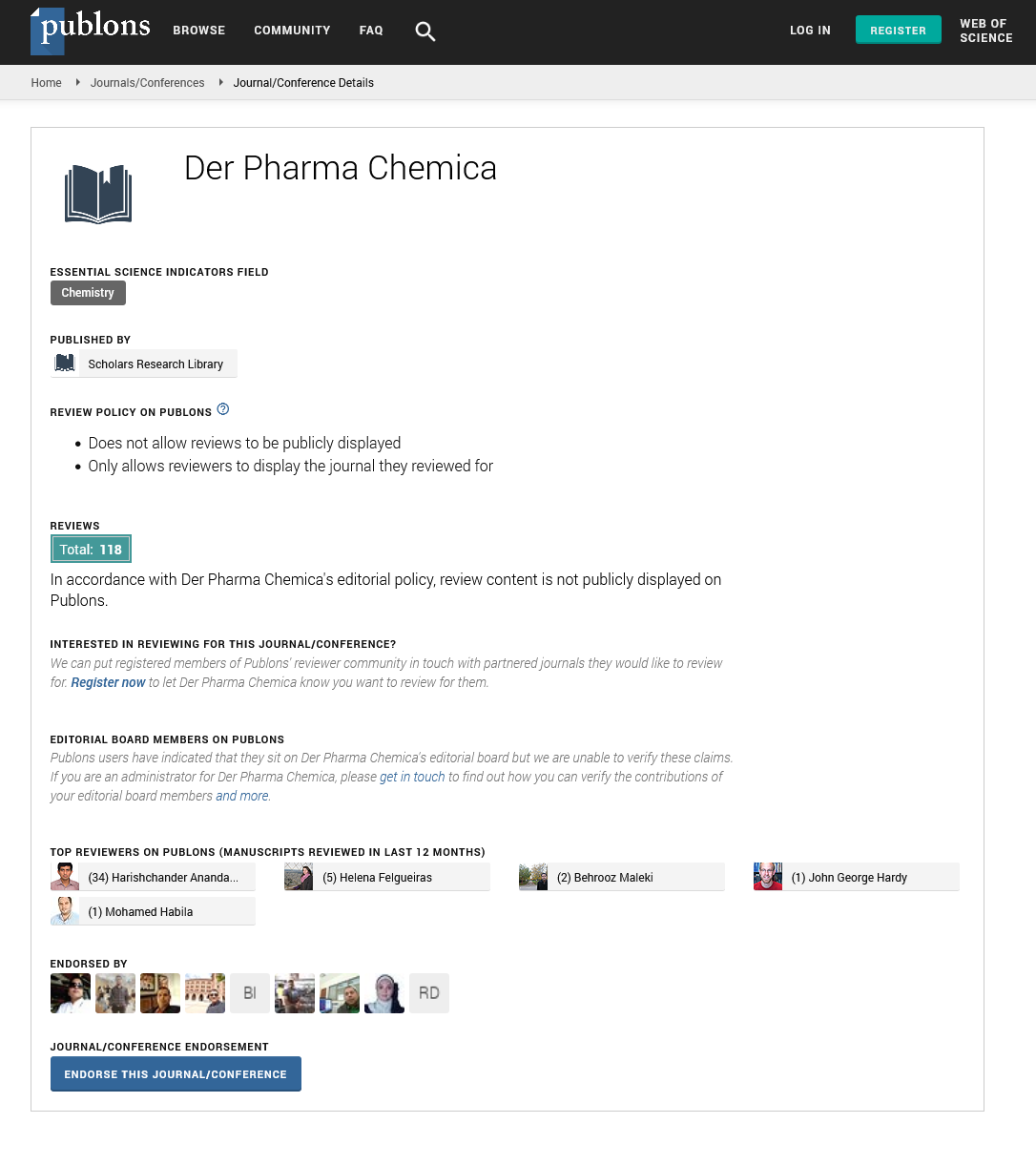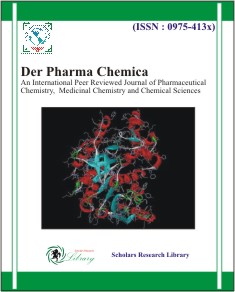Review Article - Der Pharma Chemica ( 2025) Volume 17, Issue 1
A Review on Transition Metal Oxide Electrodes For Supercapacitor Applications
Sownthari K*, Thilagapragasini CK and Asmitha TSownthari K, Department of Physics, Stella Maris College, Chennai, India, Email: sownthari@stellamariscollege.edu.in
Received: 30-Sep-2024, Manuscript No. DPC-25-149365; Editor assigned: 03-Oct-2024, Pre QC No. DPC-25-149365 (PQ); Reviewed: 17-Oct-2024, QC No. DPC-25-149365; Revised: 31-Jan-2025, Manuscript No. DPC-25-149365 (R); Published: 28-Feb-2025, DOI: 10.4172/0975-413X.17.1.601-604
Abstract
Conventional energy sources are limited and will eventually run out, leading to increased extraction efforts, higher costs and environmental harm. Switching to renewable energy sources and exploring new alternatives can create economic opportunities, drive innovation and diversify energy sources, reducing dependence on imported fossil fuels and promoting domestic energy independence. Alongside the search for new energy sources, developing efficient energy storage solutions is crucial for ensuring reliability and stability in energy supply. Supercapacitors plays a crucial role in the field of energy storage due to their high power density and capacitance. Transition metal oxides, such as Ruthenium Oxide (RuO2), Manganese Oxide (MnO2), Nickel Oxide (NiO) etc are considered superior electrode materials for supercapacitors due to their high specific capacitance and pseudocapacitive behavior. This review article will explore various synthesis methods of several metal oxides and their applications as electrodes in supercapacitors.
Keywords
Transition metal oxides; Electrodes; Supercapacitors; Nanomaterials; Electric double layer capacitance
Introduction
Energy storage materials play a pivotal role in facilitating the transition to renewable energy sources and meeting the demands of modern energy systems. These materials store energy in various forms, such as chemical, mechanical, thermal or electrical and release it when needed, enabling efficient utilization of intermittent renewable energy sources like solar and wind. Examples of energy storage materials include batteries, supercapacitors and fuel cells. Advancements in energy storage materials aim to improve energy density, cycle life, efficiency and cost-effectiveness, contributing to the development of reliable and sustainable energy storage technologies for a greener future [1].
In comparison to batteries and fuel cells, supercapacitors offer unique advantages in certain applications. While batteries store energy through chemical reactions and fuel cells generate electricity through electrochemical reactions, supercapacitors store energy electrostatically, allowing for rapid energy storage and release [2]. Supercapacitors have high power density and fast charging capabilities, making them ideal for applications requiring quick bursts of energy, such as regenerative braking in vehicles and smoothing out fluctuations in renewable energy systems [3]. Additionally, supercapacitors have a longer cycle life and higher efficiency compared to batteries, with the ability to withstand hundreds of thousands of charge-discharge cycles without significant degradation [4]. These characteristics make supercapacitors well-suited for applications that require frequent cycling and high reliability, such as electric vehicles, grid stabilization and portable electronics [5]. Moreover, supercapacitors are more environmentally friendly than batteries, as they do not contain toxic chemicals or heavy metals and they can be recycled more easily [6]. Overall, the unique advantages of supercapacitors, including high power density, fast charging, long cycle life and environmental friendliness, make them a promising energy storage solution for various emerging technologies and applications (Figure 1).
Supercapacitors utilize a variety of electrode materials to achieve high energy storage capabilities [7]. The choice of electrode materials is critical in determining the performance and characteristics of supercapacitors [8]. The common electrode materials used for supercapacitors can be broadly categorized into three main types: Carbon-based materials, conducting polymers and transition metal oxides [9].
Literature Review
Here are some examples of each types:
Carbon based materials
Carbon-based electrodes for supercapacitors offer a diverse range of materials with exceptional electrochemical properties [10]. Activated carbon, derived from various precursors like coconut shells or wood exhibit highly porous structure and large surface area facilitate extensive charge storage through electrostatic double-layer capacitance, resulting in high specific capacitance and energy density [11]. Carbon Nanotubes (CNTs) exhibit remarkable electrical conductivity and mechanical strength due to their unique cylindrical structure, enabling fast charge-discharge kinetics and high power density in supercapacitors [12]. Graphene, with its two-dimensional lattice of carbon atoms, boasts exceptional electrical conductivity and surface area, leading to superior charge storage capacity and efficiency [13]. Carbon aerogels and foams offer lightweight yet robust structures with interconnected pores, providing high specific capacitance and mechanical stability. Despite their advantages, challenges such as scalability and cost hinder the widespread adoption of carbon-based electrodes [14].
Conducting polymers
Conducting polymers represent a promising class of materials for supercapacitor electrodes, offering unique advantages such as redox activity, high specific capacitance and flexibility. Polyaniline, polypyrrole and poly (3,4-ethylenedioxythiophene) (PEDOT) are among the most commonly studied conducting polymers in this regard. Polyaniline stands out for its high specific capacitance and excellent stability, making it a favorable choice for supercapacitor applications. Its redox-active nature allows for reversible charge storage through oxidation and reduction processes, contributing to enhanced energy storage capabilities. Polypyrrole exhibits good charge storage capacity and fast charge-discharge kinetics, owing to its pseudocapacitive behavior. It offers a balance between conductivity and stability, making it suitable for various energy storage applications. PEDOT, known for its high electrical conductivity and environmental stability, is particularly promising for flexible and wearable electronics. Its inherent flexibility and mechanical robustness make it well-suited for conformal integration into wearable devices, providing energy storage solutions for emerging technologies. However, conducting polymers face challenges such as poor mechanical properties and synthesis complexity, which limit their widespread use in supercapacitor electrodes.
Discussion
Transition metal oxides
Transition metal oxide electrodes have emerged as promising candidates for supercapacitor applications due to their unique combination of properties, including high specific capacitance, excellent electrochemical stability, abundance and tunability. One of the primary advantages of transition metal oxide electrodes is their high specific capacitance, which arises from the reversible redox reactions of transition metal ions during charge and discharge cycles. These redox reactions involve the transfer of electrons between the transition metal ions in the oxide structure, leading to the storage of charge at the electrode-electrolyte interface. This mechanism enables transition metal oxide electrodes to store a large amount of energy per unit mass or volume, making them ideal for applications requiring high energy density. They also exhibit excellent electrochemical stability, allowing for long cycle life and minimal performance degradation over time. This stability is crucial for practical applications where durability and reliability are paramount. Transition metal oxides can withstand thousands to tens of thousands of charge/discharge cycles without significant loss of capacitance, making them suitable for use in various energy storage devices, including supercapacitors. One of the major advantages of transition metal oxide is their abundance in the earth's crust, which contributes to their cost-effectiveness and sustainability. Transition metals such as cobalt, nickel and manganese are readily available raw materials, reducing the overall cost of production compared to more exotic materials. This abundance ensures a stable supply chain and lowers the barrier to large-scale manufacturing, making transition metal oxide electrodes an attractive option for widespread adoption in energy storage applications. In terms of fabrication, transition metal oxide electrodes can be synthesized using a variety of techniques, including sol-gel, hydrothermal and electrodeposition methods. Different methods offer different control over the morphology, porosity and surface area of the electrodes, allowing for optimization of their electrochemical performance for specific applications. A review of few interesting transition metal oxides, their synthesis method and the outcomes of the research are summarized here. The comparative review of various transition metal oxide materials used as electrodes in supercapacitor applications, synthesized using different methods and evaluation based on its performance on cyclability and specific capacity. Ach material exhibits unique characteristics and advantages, highlighting the potential for further exploration and optimization of transition metal oxides in supercapacitor technology (Table 1).
| Material | Method | Cyclability | Specific capacity |
|---|---|---|---|
| Cobalt manganite (CoMn2O4)/Graphene Nanoribbons (GNR) | Heated for 4 hr at 70°C with KMnO4 | 96% after 1500 cycles | Energy density (84.69 WhKg-1) |
| Power density (22 KW Kg-1) | |||
| High specific capacitance (507 Fg-1) | |||
| Manganese dioxides @ spinel nickel cobaltates (NiCo2O4-MnO2) | Hydrothermal method (Heated at 120°C for 24 hour) | 95% capacitance retention after 3000 cycles | Energy density (9.4 Wh kg-1) |
| Power density (2.5 KW kg-1) | |||
| Specific capacitance (343 F g-1 at current density of 0.5 A g-1) | |||
| Lanthanum manganate (LaMnO3) and Nickel cobaltate (NiCo2O4) | Electrodeposition | Excellent cycle stability (the initial capacitance value remains 106% after 10,000 cycles of charging and discharging at a high current density of 10 A g-1) | Energy density (49 Wh Kg-1) |
| Power density (750 W kg-1) | |||
| Extremely high specific capacitance of 942 F g-1 (287.8 mAh g-1) | |||
| Zirconium dioxide (ZrO2) | Sol-gel method (1170°C ) | Had a cyclic stability of 2000 cycles | Specific capacitance (1391 F/g) at a current density of 2.5 A/g |
| TiO2−MgO mixed metal oxide nanoparticles | Sol-gel method (calcined at 700°C and 900°C) | More than 65 cycles | Specific capacitance is 810 F/g at 0.5 A/g |
| (CeNiO3, CeCaO3 and CeZrO4) | Co-precipitation method (calcined at 500°C for 5 h in air atmosphere) | Comparatively perovskites have high and excellent stability | Specific capacitances of CeNiO3, CeCuO3 and CeCoO3 perovskites were attained for 189, 117 and 128 F g-1 at 0.5 A g-1, respectively |
| Ruthenium Oxide (RuO2) | Pulse electrodeposition method | At 100th cycle, 32% and 70% of capacitance values retained for RuO2 from RuNS and RuCl3 source respectively | Specific capacitance value obtained is 1724 F/g |
| Zinc Manganite (ZnMn2O4) | Sol-gel Thermolysis method (placed at 400°C for 1 hour) | Repeated upto 10 cyclic curves with no changes in the CV curves | Specific Capacitance value is 603 mAh/g at 5 mV/s in 1 MLiOH electrolyte solution |
| Cobalt Oxide (Co3O4) | Gas-phase diffusion precipitation method | Co3O4 electrode from Co(OAc)24H2O source had high capacitance retention | Specific capacitance of electrodes of Co(OAc)2•4H2O, CoCl2•6H20 and CoCl2•6H2O source are 564 F/g, 640 F/g and 1140 F/g respectively |
| Co-Mn Composite oxide (MnCo2O4) | Electroless-electrolytic technique | For high Mn:Co ratio composite oxide 80 percentage of the initial specific capacitance was retained after 1000 cycles | Specific Capacitance is around 460 F/g at A scan rate of 20 mV/s |
Table 1: A comparison of the recent metal oxide-based electrode materials.
Conclusion
Supercapacitor is a prospective energy storage device and the development of novel and high performance electrodes are crucial considering its wide spread applications. Transition Metal Oxides (TMOs) have emerged as highly promising candidates for supercapacitor electrodes owing to their favorable capacitive performance, cost-effectiveness and environmental compatibility. Operating through a pseudocapacitive mechanism, TMOs exhibit notable attributes such as inherent stability and versatile redox properties, enabling the intercalation of electrons and ions within their crystalline lattice. The current review ascertains transition metals oxides as desirable electrodes with high capacitance, stable cyclic life and rapid charging rates which are desired qualities for high-performance supercapacitors.
References
- Almeida JM, Meneses CT, de Menezes AS, et al. J Magn Magn Mater. 2008; 320(14): p. e304-e307.
- Dhas SD, Maldar PS, Patil MD, et al. Mater Sci Eng B. 2021; 271: p. 115298.
- Peng W, Chen K, Li S, et al. Diam Relat Mater. 2022; 128: p. 109266.
- Zhang M, Guo S, Zheng L, et al. Electrochim Acta. 2013; 87: p. 546-553.
- Ahuja P, Sahu V, Ujjain SK, et al. Electrochim Acta. 2014; 146: p. 429-436.
- Kuang M, Wen ZQ, Guo XL, et al. J Power Sources. 2014; 270: p. 426-433.
- Sun X, Meng Z, Hao Z, et al. J Colloid Interface Sci. 2023; 630: p. 618-628.
[Crossref] [Google Scholar] [PubMed]
- Ayodeji P, Alejandro D, Juan Carlos, et al. Int J Res. 2018; 6: p. 136-145.
- Bayal N, Jeevanandam P. Ceram Int. 2014; 40(10): p. 15463-15477.
- Dehghani F, Ayatollahi S, Bahadorikhalili S, et al. Pet Chem. 2020; 60(7): p. 731-743.
- Arunachalam R, Prataap RV, Pavul Raj R, et al. Surf Eng. 2019; 35(2): p. 102-108.
- Kommu P, Singh GP, Bhattacharyya AS. J Energy Storage. 2018; 16: p. 156-159.
- Wang X, Fu J, Wang Q, et al. Crystals. 2020; 10(9): p. 720.
- Gomez J, Kalu EE. J Power Sources. 2013; 230: p. 218-224.




